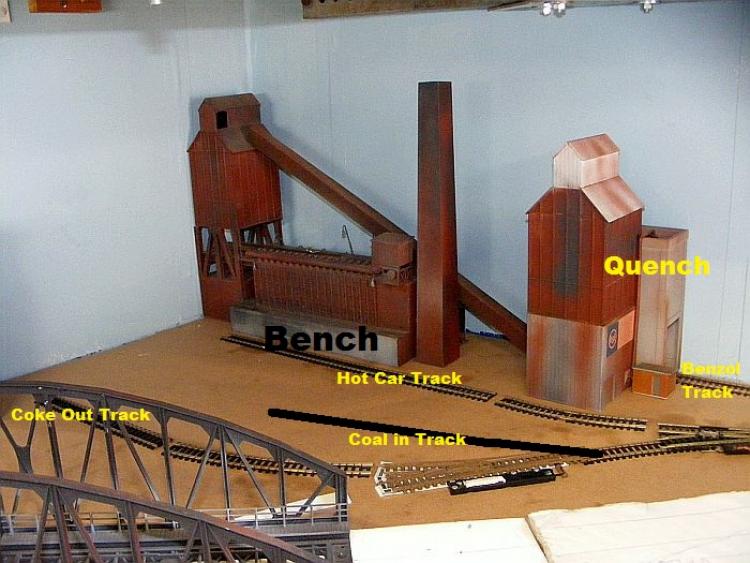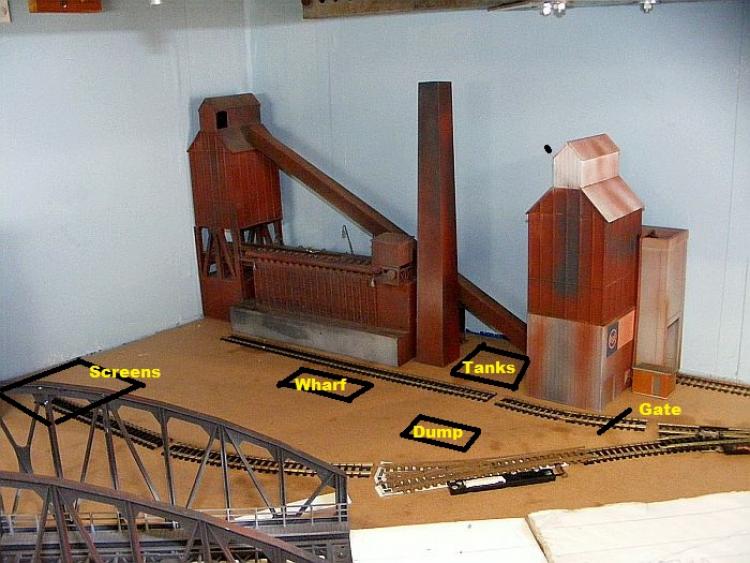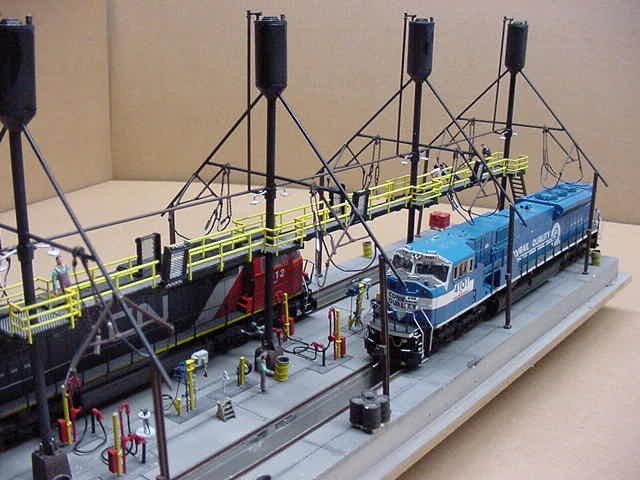Corner Real Estate
Quite a number of industries/structures have been considered for this corner piece of real estate.

Most recently I had moved 'Allied Rail Rebuilders' out of that very corner, and out to an open field in front of the bridge portion of the stone arch viaduct.
My intention was to pursue placing a power plant scene in that corner location, building flat of that power plant against the backdrop , image of big coal pile on the backdrop, then electrical distribution structure out in front of the plant. (and maybe 3 smoke stacks).
Oops, .....this morning I unpacked and was taking photos of the coke structures that were part of that steel mill scene I bought a few years ago. I figured I might as well sell this structure off as there is no way I would have room for it down near my steel mill. I had never really looked at one of these coke plants that closely, nor considered utilizing one on my layout.
BUT I got to thinking, that being another coal consumer, would this structure fit into that corner along with the coal fired power plant?....just maybe? It is a pretty interesting structure that could stand on its own rather than being directly attached to the steel mill.
So here is a little mock-up I did,..




I'm liking it,...even while I will be accused of 'too much' in a small space
Quite a number of industries/structures have been considered for this corner piece of real estate.
Most recently I had moved 'Allied Rail Rebuilders' out of that very corner, and out to an open field in front of the bridge portion of the stone arch viaduct.
My intention was to pursue placing a power plant scene in that corner location, building flat of that power plant against the backdrop , image of big coal pile on the backdrop, then electrical distribution structure out in front of the plant. (and maybe 3 smoke stacks).
Oops, .....this morning I unpacked and was taking photos of the coke structures that were part of that steel mill scene I bought a few years ago. I figured I might as well sell this structure off as there is no way I would have room for it down near my steel mill. I had never really looked at one of these coke plants that closely, nor considered utilizing one on my layout.
BUT I got to thinking, that being another coal consumer, would this structure fit into that corner along with the coal fired power plant?....just maybe? It is a pretty interesting structure that could stand on its own rather than being directly attached to the steel mill.
So here is a little mock-up I did,..
I'm liking it,...even while I will be accused of 'too much' in a small space





























